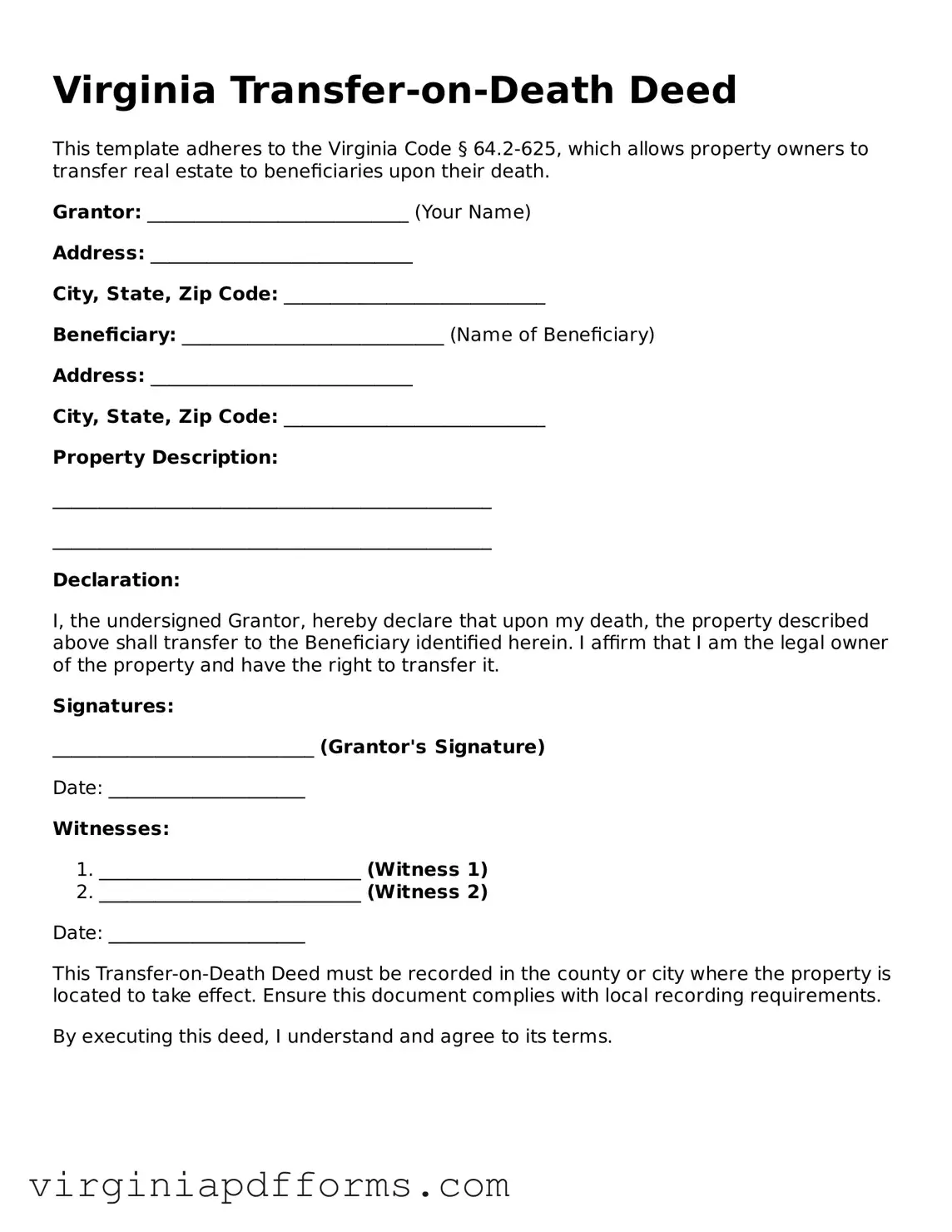Attorney-Approved Virginia Transfer-on-Death Deed Document
The Virginia Transfer-on-Death Deed form allows property owners to designate beneficiaries who will receive their real estate upon their death, bypassing the probate process. This legal tool provides a straightforward way to transfer property while retaining full control during the owner's lifetime. Understanding how to properly complete and file this form can simplify estate planning and ensure that your wishes are honored.
Access My Document Now
